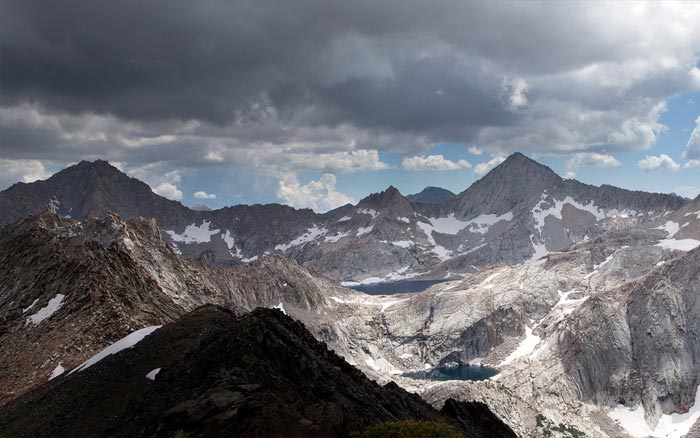Postal Arrogance
In the mid-1980s, the Army gave the Postal Service permission to build a large new postoffice on land that was about to become a national park. Buck Parker, executive director of Earthjustice, explains what happened next.

Strategic Adviser and former Executive Director Buck Parker, former executive director of Earthjustice, shares this memory of an early landmark victory for the organization:
In the 1980s the U.S. Army was turning the Presidio of San Francisco over to the National Park Service. Legislation written by local conservation activists and pushed through Congress by Representative Phil Burton directed that the Presidio, when no longer needed by the Army, would become the country’s first urban national park.
One of the Presidio’s most notable and promising features didn’t look very promising at the time. It was the roughly 100 acres along the bay known as Crissy Field. Crissy Field was an area of former dunes that had served as an Army airfield in World War I and the years shortly thereafter. It had never recovered. It was simply a large open expanse of decaying asphalt and oil crust, overgrown with whatever invasive species could grab hold in the cracks. But it was large, adjacent to the water, commanded magnificent views of the Golden Gate and the Marin Headlands, and was accessible to millions of people a year.
Unfortunately, the U.S. Postal Service and the City of San Francisco were just at this time looking for a place to build a new mail facility—a gigantic, block-like structure for the sorting and bundling of mail. To them, Crissy Field looked like the ideal place: it was already on federally owned land, so it wouldn’t reduce the city’s tax base; it was flat and cheap to build on; and there was lots of space around it for food franchises and the other sorts of activities that a new federal facility would bring.
Citizen activists were up in arms about the proposal and the prospect of losing Crissy Field for any better purpose. But the Army was willing to play ball with the City of San Francisco and the Postal Service (all the Army seemed to care about was preserving the right to play golf at the Presidio course) and within no time the permits were issued and the skeleton of the building went up. It appeared that the City of San Francisco and the Postal Service had successfully highjacked a significant part of Crissy Field and set the stage for more development to come.
By this time, however, the citizen groups had found their way to Earthjustice (then Sierra Club Legal Defense Fund) and staff attorney Deborah Reames. She filed suit, pointing out that the project violated the National Environmental Policy Act (no assessment of environmental impact had been done) and the bill creating the Golden Gate National Recreation Area. Her arguments convinced a federal judge that the construction was proceeding illegally.
There was the problem, however. The structure was already half built, and in this case the most likely thing for a court to do would be to allow the project to be completed with some after-the-fact cleaning up of the illegalities. We’d technically have won, but the win wouldn’t have done Crissy Field much good. What to ask the judge to do was a big question; was it conceivable that Deborah could persuade him to order the whole building to be torn down?
In the 1980s Deborah, Mike Sherwood, and I frequently went for a jog over lunch time. Our route took us from our old office on Fillmore Street to near the Arguello Gate of the Presidio. Deborah suggested one day that we instead run along the path at Crissy Field and take a look at the problem.
We stopped and stared through a chain link fence at the mass of reinforced concrete before us. It was big, ugly, and out of place, and one could see from its very location and access roads that many other structures would follow, eating into the open space. Mike and I, with mock macho, urged Deborah to “go for it.” Easy for us to say—it would be very hard to convince a judge to order the building demolished, and Deborah would be the one to do it.
The long and the short of it is that Deborah did persuade the judge to order the building torn down. There was much screaming on the part of the City and County of San Francisco and the mayor’s office, but down it came. Many years later a master plan for Crissy Field was completed, and today a man-made lagoon, an attempt to restore a little bit of nature in an urban area, sits very close to, and maybe even occupies some of the same space, where the post-office-to-be once stood. I walk there at least every two or three months and marvel at what almost happened but didn’t, thanks to Deborah, Earthjustice, and some great citizen activists. When my wife and I have out-of-town guests I often take them to Crissy Field for an outing, because it’s such a magnificent place and, of course, because it will give me another chance to tell this story.